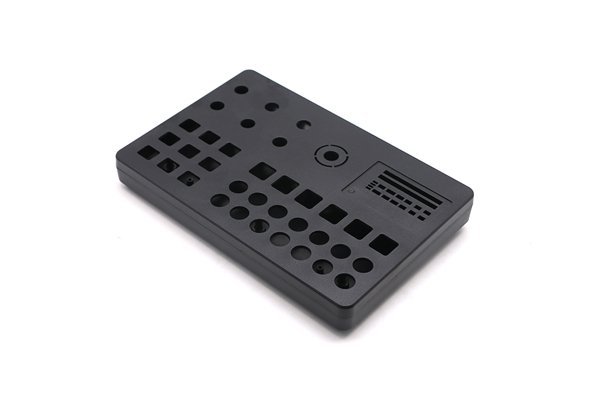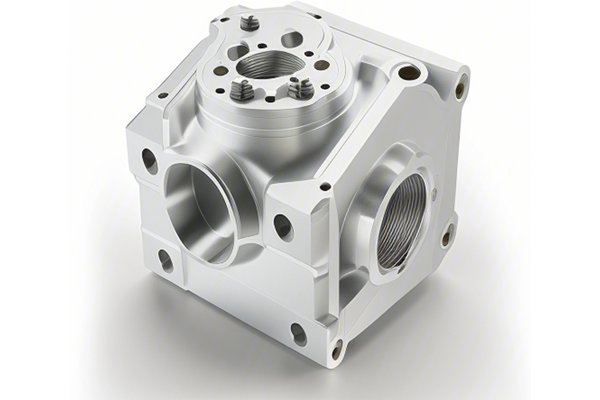Did you know that approximately 80% of the design and manufacturing issues in production arise during the prototyping phase? This startling statistic highlights the significance of effective prototyping, particularly when it comes to creating intricate shapes through Computer Numerical Control (CNC) milling. CNC milling has evolved into a cornerstone technology for manufacturing complex prototypes, offering precision and flexibility unmatched by traditional machining methods. However, there are inherent challenges in this process that can jeopardize product quality, increase costs, and extend lead times. This article delves into the technical difficulties faced in CNC milling of complex shape prototypes and offers effective solutions to overcome these challenges.
Understanding CNC Milling
What is CNC Milling?
CNC milling is a subtractive manufacturing process where material is removed from a solid block to create desired geometries. CNC machines are equipped with a rotating cutting tool that precisely removes material based on a programmed design. This enables manufacturers to produce intricate shapes with high precision. In industries like aerospace, automotive, and medical equipment, CNC milling is increasingly favored for rapid prototyping.
The Importance of CNC Milling for Complex Prototypes
The demand for complex shape prototypes is rising due to the increasing complexity of product designs. CNC milling allows for the creation of parts featuring intricate designs that are not feasible with manual machining methods. The significance of this technology cannot be overstated, as it contributes to the development of innovative solutions across various industries.
Common Technical Difficulties in CNC Milling of Complex Prototypes
While CNC milling offers numerous advantages, manufacturers often face several challenges during the process. Understanding these difficulties is vital for leveraging the full potential of CNC milling technology.
The selection of appropriate cutting tools is crucial in CNC milling. The complexity of the prototype shapes, combined with the material properties, can impact tool performance. Using inadequate tools may lead to unsatisfactory surface finishes, higher wear rates, or even tool breakage.
Solution
Conducting a thorough analysis of the material to be machined is essential. Choosing cutting tools that are specifically designed for the material’s machinability characteristics will enhance efficiency. Additionally, utilizing advanced toolpath strategies can help improve the performance of the selected tools.
Accurate calibration of CNC machines is essential to achieve the desired precision, especially for complex shapes. Inaccurate machine settings can result in dimensional deviations, compromised tolerances, and overall fabrication errors.
Solution
Regular machine maintenance and calibration should be performed. Implementing an extensive setup process that checks alignments, tool offsets, and zero-reference points will minimize errors. Investing in advanced probing systems can further enhance precision during the setup phase.
Creating the toolpaths for intricate shapes is often a time-consuming and intricate task. The complexity of the geometries may require multiple setups and machining cycles, which can lead to inefficiencies and increased production times.
Solution
Employing advanced CAD/CAM software can help automate the toolpath generation process. Algorithms like adaptive toolpath strategies can significantly reduce machining time while maintaining accuracy. Simulation software can also provide valuable insights prior to actual machining, allowing manufacturers to optimize the process accordingly.
CNC milling generates significant heat, which can affect both the workpiece and cutting tools. Excessive heat can lead to thermal expansion, resulting in dimensional inaccuracies. Additionally, high temperatures can accelerate tool wear, requiring frequent replacements and increasing operational costs.
Solution
Utilizing appropriate coolant and lubrication systems will help manage heat during the milling process. Implementing strategies like low cutting speeds and optimized feeds can also minimize the heat generated. Regular tool inspections and utilizing coatings can further reduce wear rates.

Achieving a high-quality surface finish is particularly challenging for complex shapes, as even minor inconsistencies can affect the functionality of the prototype. The intricacy of the designs can lead to difficulties in achieving the desired smoothness.
Solution
Selecting the right cutting parameters, such as optimal feed rates and speeds for each operation, is crucial. Advanced finishing techniques, such as ball end milling or contouring, can be used strategically to enhance surface finish.
When milling complex shapes, ensuring accuracy in dimensions is a persistent challenge. Tight tolerances often necessitate multiple machining processes, which can introduce errors.
Solution
Establishing stringent tolerances is necessary, but also leveraging technology such as multi-axis CNC machining can improve accuracy. Additionally, regular quality control checks during the machining process can identify potential issues early, allowing for corrective measures to be taken.
Complex prototypes often require multiple setups and operations, complicating workflow and scheduling. Delays in one step can cascade, affecting the entire production timeline.
Solution
Employing lean manufacturing principles, such as value stream mapping, can help identify and eliminate inefficiencies in the workflow. Developing detailed production schedules and adhering to them will ensure timely deliveries.
Best Practices for Overcoming CNC Milling Challenges
The following best practices can further enhance CNC milling operations when dealing with complex shape prototypes:
In summary, while CNC milling presents unique challenges when manufacturing complex shape prototypes, diligent planning, informed decision-making, and the adoption of advanced technologies can pave the way for successful outcomes. From tool selection and machine calibration to workflow optimization, each of these steps plays a vital role in improving effectiveness and efficiency.
As industries continue to evolve and demand increasingly intricate designs, adapting to these challenges is not merely an option—it’s a necessity. By understanding and addressing the technical difficulties associated with CNC milling, manufacturers can produce high-quality prototypes, ultimately driving innovation and advancing their competitive edge.
This exploration into CNC milling’s challenges underscores its importance as a focal point for anyone involved in manufacturing or product design. In a world where precision and speed govern success, mastering these techniques will not only enhance your ability to meet client expectations but also enable you to push the boundaries of what is possible through innovation and technology.






